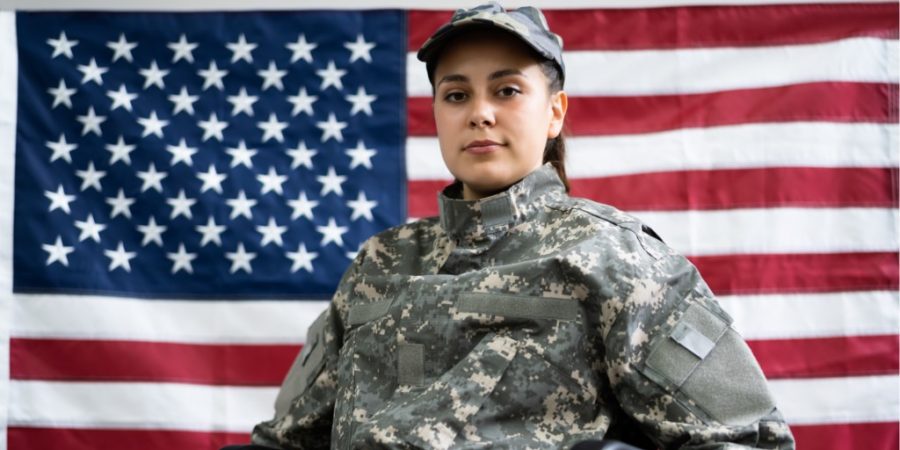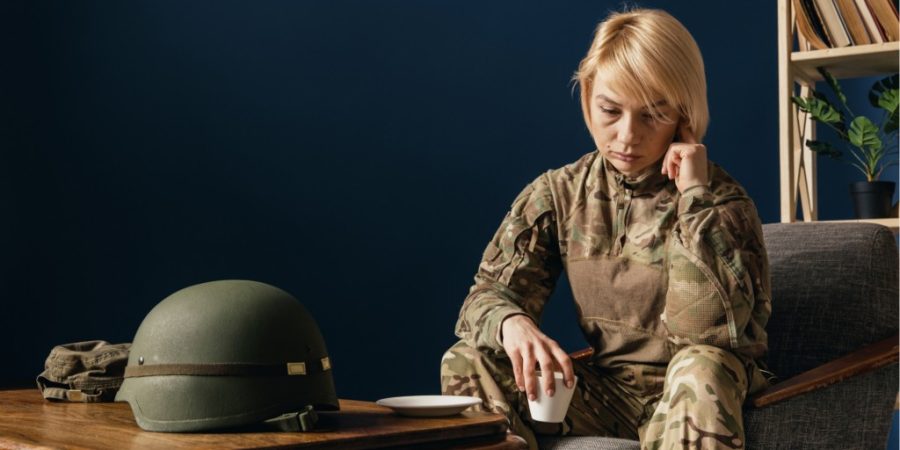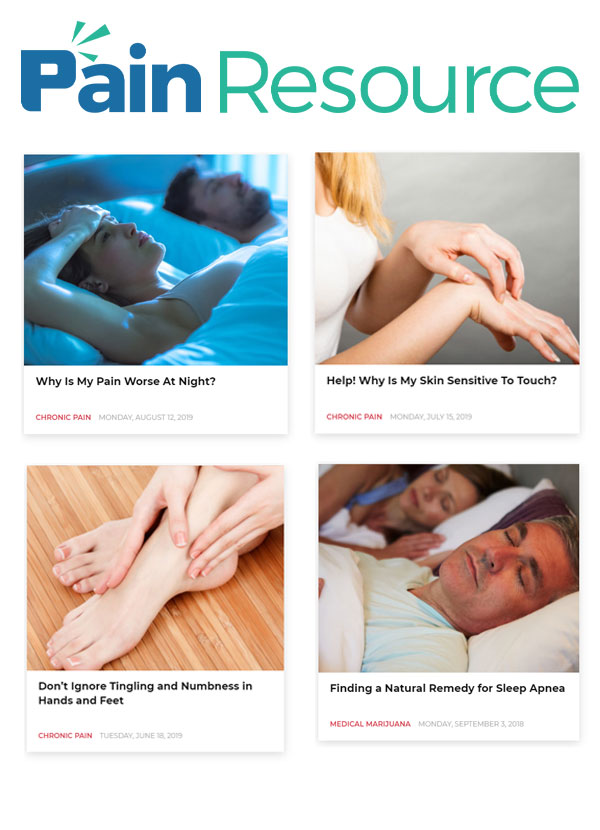
Trauma is something that can happen to anyone of any age, race, or gender. But there are certain groups of people who are at an increased risk for experiencing trauma and, as a result, developing post-traumatic stress disorder (PTSD). Female veterans are part of one of these vulnerable demographics. However, detecting PTSD symptoms in women, especially veterans, can be challenging.
What’s even more difficult is knowing the steps to take if you are a female veteran who needs help with PTSD. Today, we will answer your questions about PTSD symptoms in women to break the stigma surrounding getting help. and the hope that comes with treatment for PTSD.
Table of Contents
What Traumatic Experiences Do Female Veterans Have?

Trauma is something that tends to follow veterans—men and women alike. This is because veterans often have to encounter dangerous, life-threatening situations while serving. Not only are veterans faced with things like service injuries, combat exposure, or IED blasts, but even the experience of being located in a new, unknown place without familiar faces around can be completely jarring to the mind and body.
The risk of experiencing trauma is usually the same for both men and women who serve. However, female veterans are at a higher risk for experiencing sexual assault and intimate partner violence. Studies show that one in three female veterans experienced a form of sexual assault while serving. On the other hand, one in 50 male veterans reported similar experiences. This is known as military sexual trauma (MST), and it is a common source of PTSD symptoms in women.
MST can impact women who serve in many ways. This can cause immediate distress, but the effects of MST can also take months or even years to come to the surface. The U.S. Department of Veterans Affairs also reports that MST can impact relationships, physical health, and lead to other mental health conditions such as:
- PTSD
- Depression
- Anxiety
- Substance use disorders
Of course, this is just one of the dangers that female veterans face and just one of the many experiences that can lead to PTSD symptoms in women. This shows just how impactful the trauma that occurs during service can be, especially when the symptoms begin to interfere with everyday life.
Are PTSD Symptoms in Women Different Than For Men?
Truthfully, there isn’t a clear cut answer for this because everybody experiences trauma differently, regardless of gender. Two veterans who go through the exact same trauma will most likely process and cope with that event in completely different ways.
Veterans frequently have the mentality that they need to be strong, stoic, and self-reliant. For female veterans, there is added pressure. In our society, women are often viewed as weak and emotional. As a result, female veterans might find it challenging to reach out for help—they are nervous that they will not be believed or taken seriously simply because they are women.
When it comes to the symptoms of PTSD in women, some veterans think that they don’t have any mental health problems. They might think instead that they’re just being emotional or sensitive. However, this is far from the truth.
PTSD is incredibly challenging to live with and can greatly impact how somebody functions. This mental health condition can make it hard to find a job, socialize, spend time with family and friends, and doing simple things that many civilians take for granted, such as going to the grocery store or simply leaving the house.
It’s important to remember that PTSD is the brain’s way of saying that the traumatic experience was too much to handle all at once. When a veteran has symptoms of PTSD, the brain is trying to protect itself from the memories and sensations of being in a life-altering situation. Sometimes, the symptoms of PTSD don’t even appear for months or even years after the traumatic event.
Symptoms of PTSD in Women
When the signs of PTSD do show up, they can present as both physical and emotional symptoms. Other common PTSD symptoms in women include:
- Flashbacks
- Nightmares
- Headaches
- Nausea
- Anxiety or agitation
- Feeling paralyzed
- Feelings of panic
- Trauma triggers (loud noises, flashing lights, crowded spaces, etc.)
- Being easily startled
- Emotional numbness
- Feeling on edge
- Using drugs or alcohol to cope with distress
This last symptom is a huge red flag for female veterans who need help for PTSD. Unfortunately, without proper treatment, PTSD symptoms in women usually only continue to worsen. This is what leads veterans to turn to drugs or alcohol.
A startling amount of veterans who have PTSD also have a substance use disorder (SUD). Research shows that more than 20 percent of veterans with PTSD have a SUD as well.
The temporary emotional numbness that comes from substance abuse might seem like a better alternative than the intense memories of trauma, but the reality is that drugs and alcohol serve to make PTSD symptoms worse. Rather than burying the emotions or using addictive substances to try to ignore them, getting effective treatment for PTSD and SUD is the only way to find true peace.
Is There Treatment for PTSD?

Luckily, there is treatment out there for PTSD and addiction. Keep in mind that the best kind of treatment will be tailored to veterans specifically. Typical addiction recovery approaches often do not take into account the experiences that veterans have, especially involving PTSD symptoms in women. Therefore, servicemen and women would benefit most from a treatment program that was made by veterans for other veterans.
Heroes’ Mile is a facility that can offer this unique perspective on veteran treatment. Our approach to substance use recovery takes into consideration the fact that many veterans with SUD also have PTSD. Furthermore, we understand that the symptoms of PTSD in women can present in different ways and might require specialized treatment as a result. Rest assured that each of our patients have a customized treatment plan to best address their own recovery goals.
Some of the treatments for PTSD and addiction include:
- Medical detox from drugs and alcohol
- One-on-one therapy
- Cognitive behavioral therapy
- Eye movement desensitization and reprocessing (EMDR) therapy
- Group sessions
- Family counseling
- Nutritional education
- Equine therapy
All of these treatment options are here to help make the transition to civilian life easier. This is why we also help veterans with job skills. Ultimately, the goal with recovery is to guide you toward a happier, healthier life in every aspect.
PTSD Symptoms in Women Can Be Treated
It’s true that PTSD symptoms in women can be especially challenging to identify and get help for. But regardless of your gender or the experiences you’ve had while serving, help is here. If you’re ready to put the pain of PTSD and addiction behind you, reach out to our admissions experts at 888-838-6692. Feeling unsure? Contact us confidentially by submitting a form online. We understand how hard taking the first step can be—but we also know the joy that recovery can bring. Find out more and start your journey with Heroes’ Mile today.
The post PTSD Symptoms in Women: Signs, Stigma, & Treatment for Female Veterans appeared first on Heroes’ Mile Veterans Recovery Center.
Source
Original Author: Heroes’ Mile

